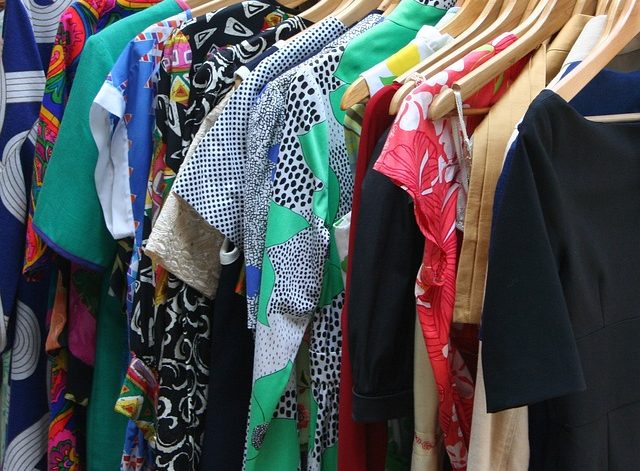What is Fast Fashion? Why is it a Problem?
Fast fashion is the term used to describe those articles of clothing, fabric or goods that are mass produced and appeal to the audience because of their affordability and trendiness. Fast fashion brands typically have new styles and designs every few weeks because of the fast moving trends in fashion hence the name “Fast Fashion”.
Fast fashion is called so because it is mass produced and sold cheap. This distinction from regular fashion clothing is particularly important because the affordable rates and easy access to these clothing via websites are the primary reason everybody can buy them and discard them just as fast. It is highly unsustainable and harmful for the environment.
Fast Fashion is a problem mainly because of the mass production that takes place every few weeks to keep up with the trends and all the unsold clothes from the previous batch are disposed off in landfills where they are often burned- since it is cheaper than recycling and many brands also use fossil fuel based fabrics that contribute to emissions.
For more information, read: Fashion Industry and Its Negative Impacts on the Environment

Causes and Impacts of Fast Fashion on Environment:
The fast fashion industry is the world’s second greatest consumer of water. Approximately 79 trillion liters of water is used per year. It contributes 10% of global carbon emissions and 20% of all industrial waste water. Some of the other impacts are:
1. Land pollution:
Causes– Mass production of clothing leads to mass buying and mass discarding just as quick, due to fashion trend changes and companies introducing new designs and collections that make people buy more and the old clothes end up as solid waste.
Effects– This excess clothing ends up in mass landfills. Where often they are disposed improperly by being exposed to the elements of nature, burning or incineration that releases CO2 emissions every few weeks.
2. Air pollution:
Causes– Apart from industrial emissions (SOx, NOx, CO2, CO), which are a part and parcel of all industries around the world but, fashion industry also contributes to the emissions that result due to improper disposal practices.
Effects– Due to burning of clothing articles in the landfills. These clothing when incinerated, generate all sorts of harmful toxins as the dyes, pigments and chemicals with which they are treated and prepared are turned into gaseous form. The resulting Ash disposal is another problem because there is simply too much of clothing to be burned on a daily basis due to the nature of the industry.
3. Water pollution:
Causes– Fast fashion industry much like the textile industry, is based on the processes like spinning, bleaching, dyeing, and mercerizing which not only utilize vast number of chemicals but in the case of bleaching and dyeing also use huge volumes of water.
Effects– During each of these processes waste water containing bleach, chlorine, pigments and dyes, caustic solution from mercerizing process etc. is present which can harm the aquatic life and pollute potential drinking source of water in nearby streams. In a world where water scarcity is becoming increasingly apparent, fast fashion contributes the most to its depletion.
4. Byssinosis/Cotton as a raw material:
Causes– Cotton needed for fabric production needs tons of water and is grown miles away from the textile unit. It is also unsustainable for the environment as 1 kg of cotton needs 10,000 liters of water. Globally that makes up about 250 billion tons- an insane volume of water that will only be wasted as the fabric ends up in landfills after every few weeks. A cotton shirt requires 5 liters of water alone, so the next time you want to buy a new shirt- consider these factors!
Effects– The transport of cotton from the land to the factory not only causes increased emissions but also the fact that cotton picking itself leads to byssinosis– a lung disease caused due to inhaling cotton dust and fibers that greatly harm the health of the workers who are already underpaid and cannot afford health insurance or treatment.
5. Environmental injustice:
Causes– The reason fast fashion is so cheap and readily available because goods like jeans, shoes, purses, bags etc. are made by people living in under developed/developing countries at often free/severely underpaid labor and unsafe working conditions.
Effects– The emissions produced as a result of these industries are the drivers of climate change whose repercussions are already being suffered by the very same poor communities in underdeveloped countries like Bangladesh, Sri Lanka and Pakistan, whose labor they exploit. Floods, droughts, pollution and water scarcity in these countries are all because of climate change driven by these industries.
6. Microfiber pollution:
Causes– During the manufacturing stage, washing and packaging step is also involved. During this washing a lot of color, dyes and microfiber– tiny particles of the yarn, cotton, polyester or any fabric are released in the water.
Effects– This can eventually lead to problems in drains and sewage waterways where they may accumulate overtime and end up in aquatic systems where they may accumulate on the plastic particles in the ocean.
Suggestions and Alternatives to Fast Fashion:
1. Avoid fast fashion. Buy few clothes and use them until worn out. This is definitely difficult when everyone around you is wearing new pieces every few weeks, but remind yourself that every piece has required about 5 liters of water each and caused great harm to underprivileged communities to reach the market. Do not contribute to it.
2. If everyone starts to ban fast fashion brands. There will be reduced demand which will lead to them revising their marketing strategy and attempt to be more eco friendly or sustainable.
3. Buy local. Importing and exporting of these goods also leaves a carbon footprint. Transport emissions as well as processing emissions all lead to increased GHG. Buying local will reduce that. Read: All You Need To Know About Carbon Footprint And Its Importance.
4. Buying from sustainable brands that have used eco-friendly and sustainable agricultural practices and crop alternatives like using bamboo instead of cotton for instance.
5. Using Bamboo over cotton– bamboo requires just 8-12 inches of water a week during its initial phase of growth (even less once it has matured) as opposed to 1 kg of cotton which requires 10,000 liters of water. Bamboo also grows quickly at a rate of 1.5 inches per hour whereas cotton takes 150-180 days. This means that Bamboo not only can be used as a better alternative instead of cotton but it also improves the quality and longevity of the goods it is used for such as Bamboo bottles and shirts made of Bamboo silks instead of cotton. Bamboo uses only 1/3rd of the water used for cotton.
Conclusion:
The Fast Fashion Industry is inherently very unsustainable as the items produced by it are not meant or intended to last. It capitalizes on the consumer demand by starting trends every few months which leads people to purchase more without having used the previous clothes they already own. This cycle feeds into the demand of the changing trends and as a consequence our environment suffers immensely. We need to also raise awareness among the masses to truly curb the fast fashion mania.
Also Check Out: Makeup Industry and Its Negative Impacts on the Environment
I hope you all liked this post! Please comment below if you have any suggestions, comments, or feedback! We at #envpk love hearing from our readers! Thanks!




